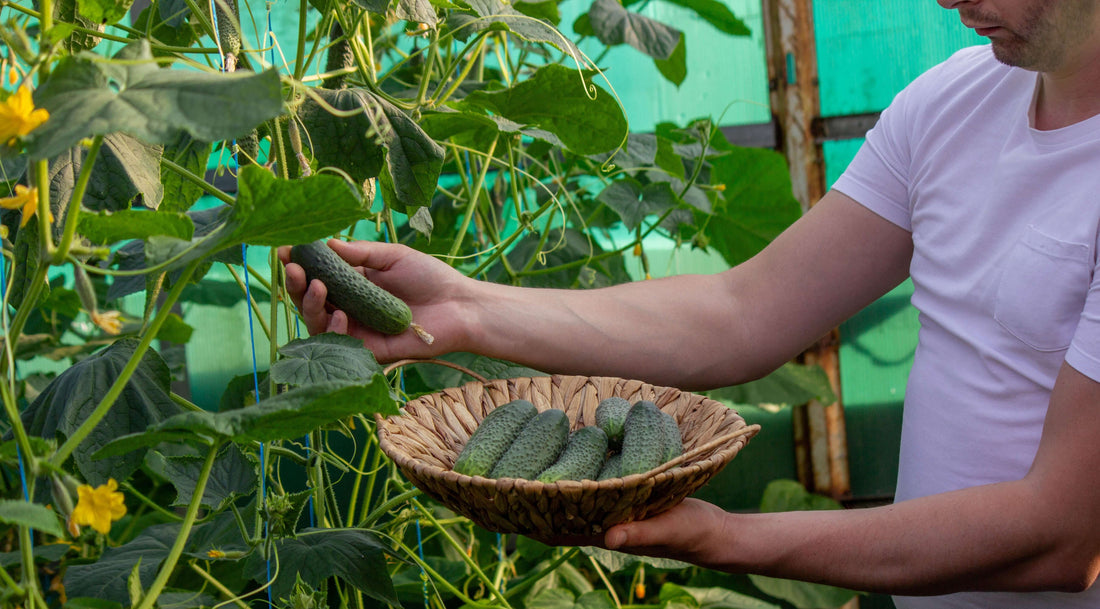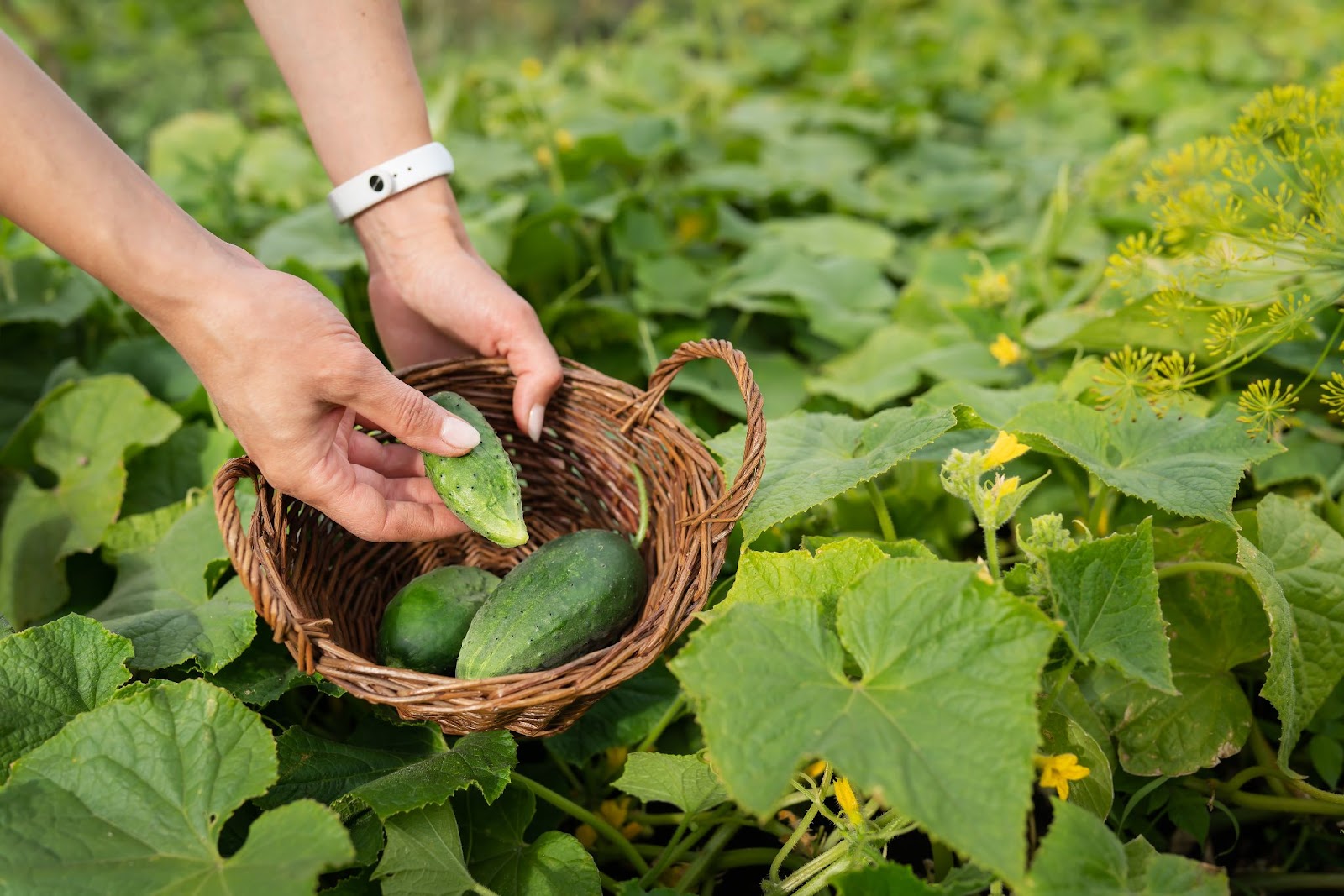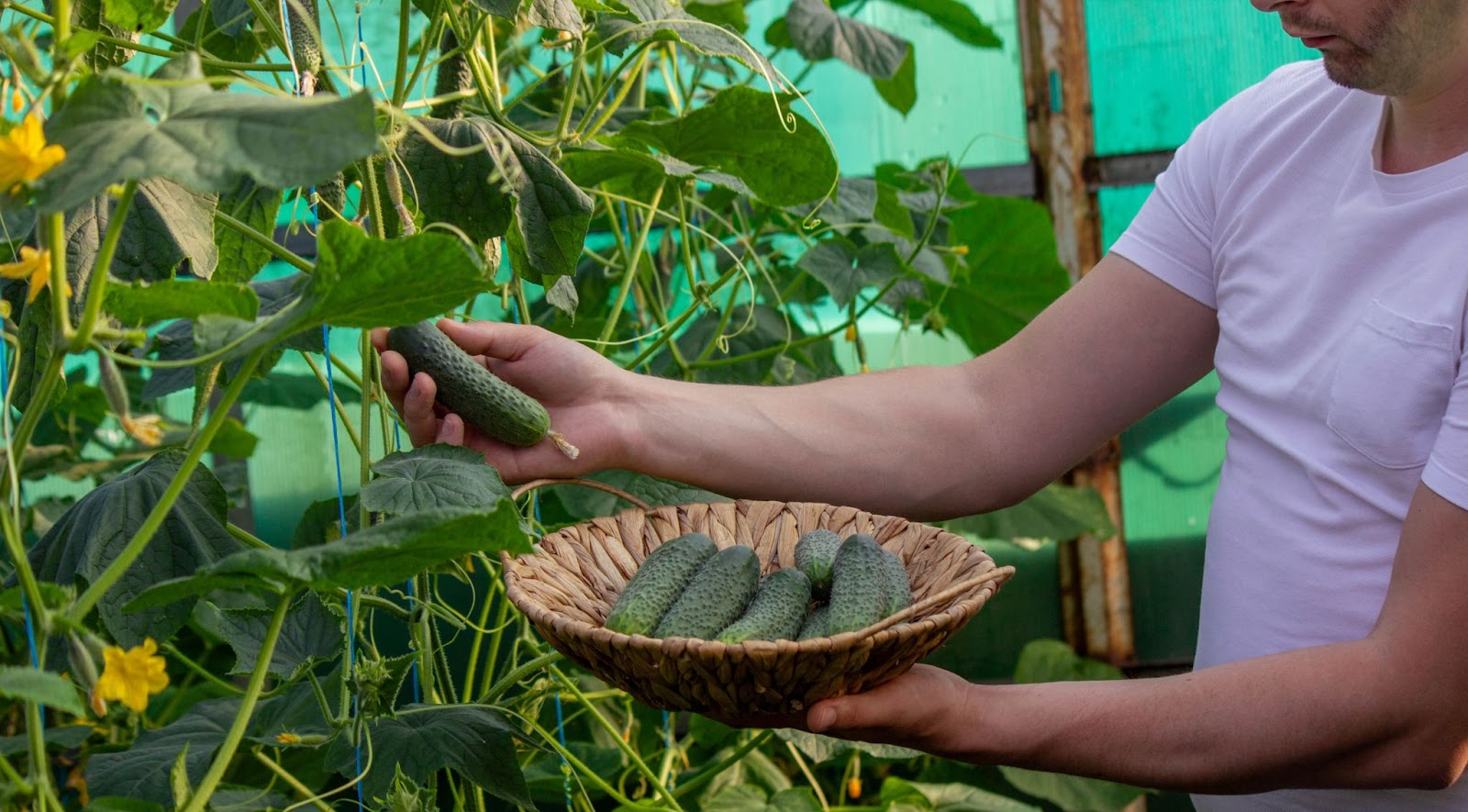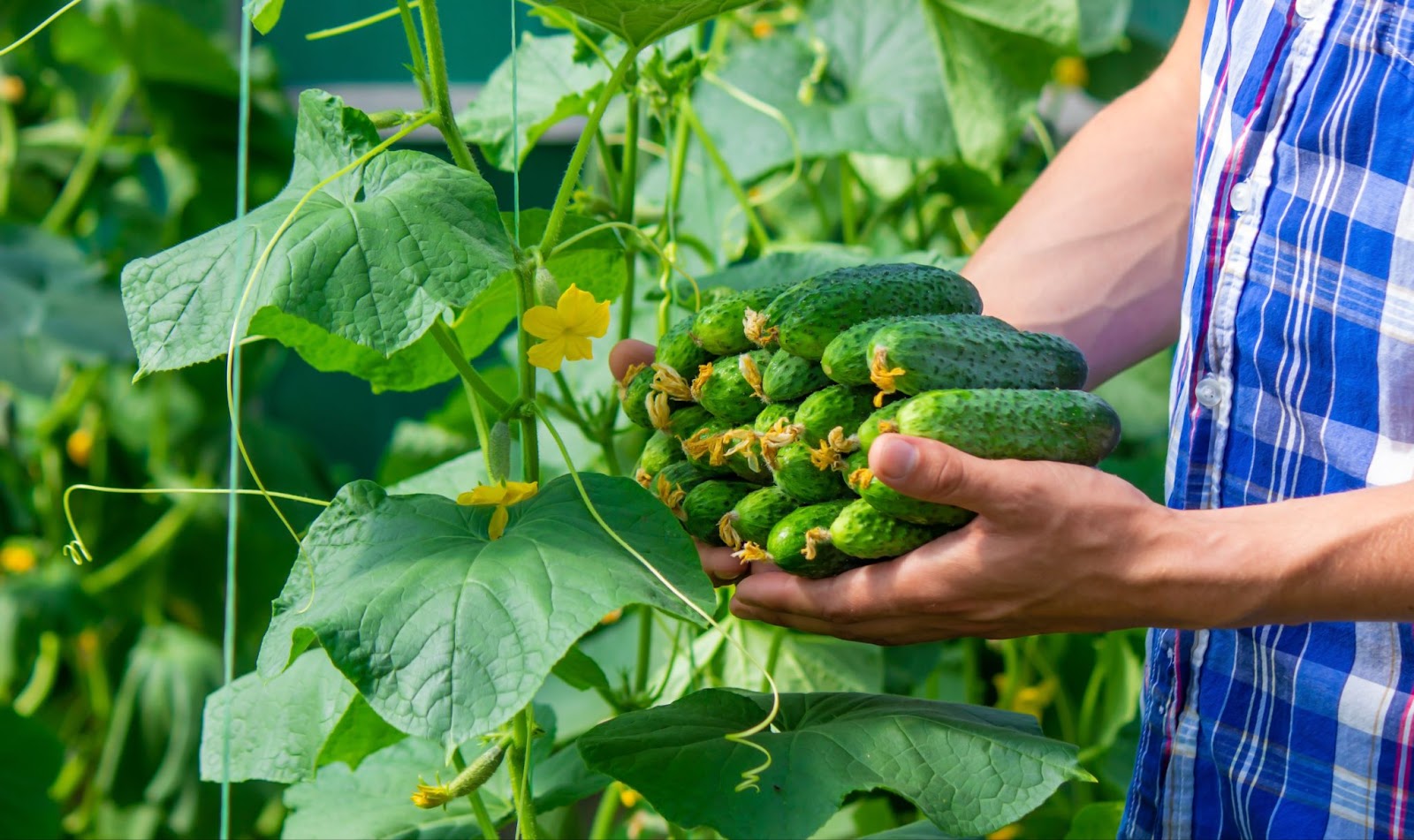
Organic Cucumber Planting Guide (U.S. Practices)
Share
Topics Covered in This Article
-
Introduction to Organic Cucumber Cultivation
-
Ideal Climate and Soil Conditions
-
Choosing Cucumber Varieties
-
Soil Preparation and Inputs
-
Planting Techniques
-
Watering Requirements
-
Organic Fertilization Schedule
-
Pest and Disease Management (Organic-Only)
-
Harvesting Cucumbers
-
Where to Source Organic Inputs

1. Introduction to Organic Cucumber Cultivation
Cucumbers (Cucumis sativus) are a staple in American home gardens and small-scale organic farms. Grown for both fresh market and pickling, cucumbers thrive in warm climates with rich, well-draining soil. This guide outlines organic methods tailored to U.S. agricultural practices, focusing on sustainable and chemical-free cultivation using dairy compost, worm castings, and approved organic fertilizers.
2. Ideal Climate and Soil Conditions
Cucumbers grow best in USDA zones 4–11 with full sun exposure and temperatures between 70–90°F. Soil should be loamy with a pH of 6.0 to 6.8. Avoid waterlogged or overly compacted soils, as cucumber roots need both aeration and moisture.
3. Choosing Cucumber Varieties
Selection depends on your growing goals:
-
Slicing varieties like ‘Marketmore 76’ are popular for fresh consumption.
-
Pickling varieties such as ‘Boston Pickling’ are smaller and denser.
-
Burpless or seedless types are ideal for sensitive stomachs and are gaining traction in U.S. markets.
Choose disease-resistant cultivars adapted to your region for optimal performance.

4. Soil Preparation and Inputs
Before planting, ensure your soil is fertile and biologically active. The following inputs are recommended:
-
Dairy Compost: Use Dan's Gold Organic Dairy Compost, a premium compost made from organic dairy manure. It enhances soil structure, microbial activity, and moisture retention.
➤ Buy Dan's Gold Organic Dairy Compost -
Worm Castings: Mikey’s Worm Poop Organic Dairy Vermicompost provides concentrated nutrients and beneficial microbes that support seedling establishment and sustained plant health.
➤ Try Mikey’s Worm Poop Organic Dairy Vermicompost -
Organic Fertilizer: Use an OMRI-listed balanced organic fertilizer (e.g., 5-5-5 NPK) as a supplemental nutrient source throughout the growing cycle.
Soil Preparation Steps:
-
Till the soil to a depth of 8–10 inches.
-
Incorporate 2–3 inches of dairy compost and mix evenly.
-
Apply 1 inch of worm castings near the root zone during transplanting or direct seeding.
-
Rake smooth and water the area thoroughly before planting.
5. Planting Techniques
You can direct-seed or transplant cucumbers depending on your climate.
-
Direct Seeding: Sow seeds 1 inch deep, 12 inches apart in rows spaced 3–5 feet apart.
-
Transplanting: Start seeds indoors 3–4 weeks before the last frost. Transplant when seedlings have 2–3 true leaves and soil temps reach at least 70°F.
Consider using raised beds or trellises for vertical support to reduce disease risk and save space.
6. Watering Requirements
Cucumbers require consistent moisture, especially during flowering and fruiting. Aim for:
-
1–1.5 inches of water per week.
-
Drip irrigation is preferred to avoid wetting foliage and reduce fungal issues.
-
Mulch with straw or organic matter to retain moisture and suppress weeds.
7. Organic Fertilization Schedule
|
Growth Stage |
Application |
Material |
|
Pre-plant |
2–3 inches |
Dan’s Gold Organic Dairy Compost |
|
At planting |
1 cup per plant |
Mikey’s Worm Poop |
|
3 weeks post-planting |
Side-dress with 5-5-5 organic fertilizer |
Organic Fertilizer |
|
Flowering stage |
Light compost tea drench or worm casting tea |
Homemade tea using Mikey’s Worm Poop |
Repeat side-dressing every 3–4 weeks depending on plant vigor and soil test results.
8. Pest and Disease Management (Organic-Only)
Common issues include cucumber beetles, aphids, powdery mildew, and downy mildew.
Control Methods:
-
Companion Planting: Use marigolds or nasturtiums to deter pests.
-
Row Covers: Use lightweight fabric to protect young plants.
-
Neem Oil & Insecticidal Soap: Apply weekly or as needed.
-
Crop Rotation: Avoid planting cucurbits in the same spot consecutively.
Encourage beneficial insects such as ladybugs and parasitic wasps to naturally suppress pest populations.

9. Harvesting Cucumbers
Harvest cucumbers when they reach their mature length but before they turn yellow or develop seeds. Frequent harvesting encourages more fruit production.
-
Slicing cucumbers: 6–8 inches long
-
Pickling cucumbers: 3–4 inches long
Use clean, sharp pruners or scissors to avoid damaging the vines.
10. Where to Source Organic Inputs
All recommended inputs in this guide can be sourced from Soil, Seed & Water, a trusted provider of high-quality organic soil amendments and garden inputs.
-
Dan’s Gold Organic Dairy Compost
➤ Available Here
-
Mikey’s Worm Poop Organic Dairy Vermicompost
➤ Shop Now
-
Other organic fertilizers and tools for your organic cucumber garden
➤ Explore Products
Conclusion
Organic cucumber cultivation is not only sustainable but also rewarding when proper practices and inputs are used. By focusing on soil health, using organic inputs like dairy compost and worm castings, and maintaining consistent cultural care, growers in the U.S. can enjoy bountiful, chemical-free cucumber harvests.
